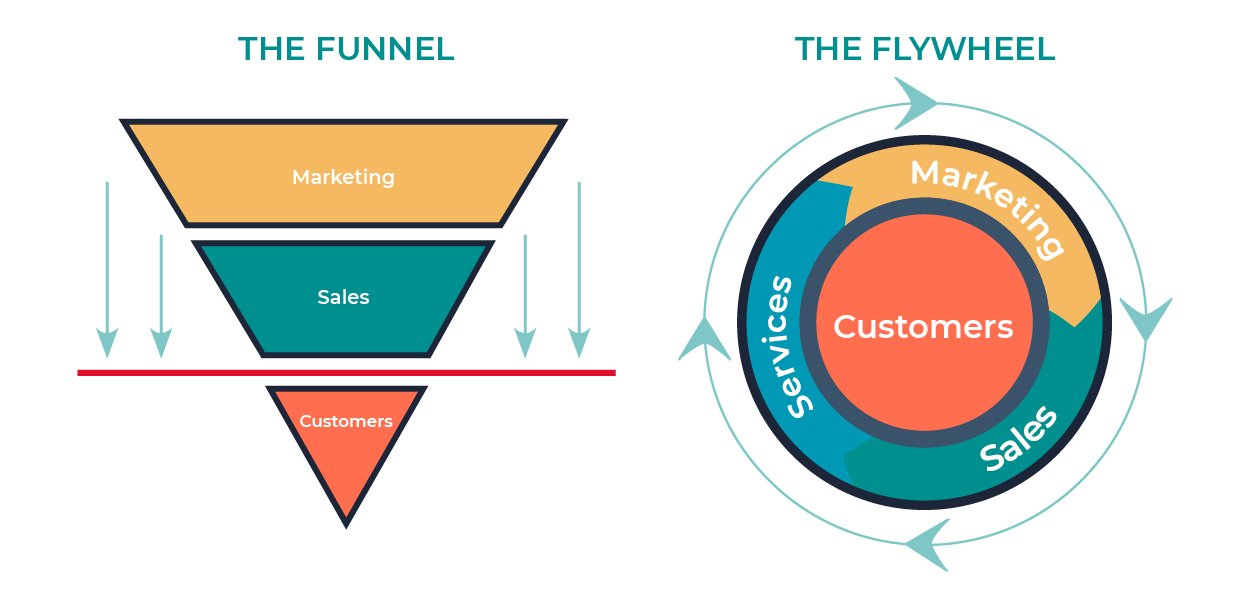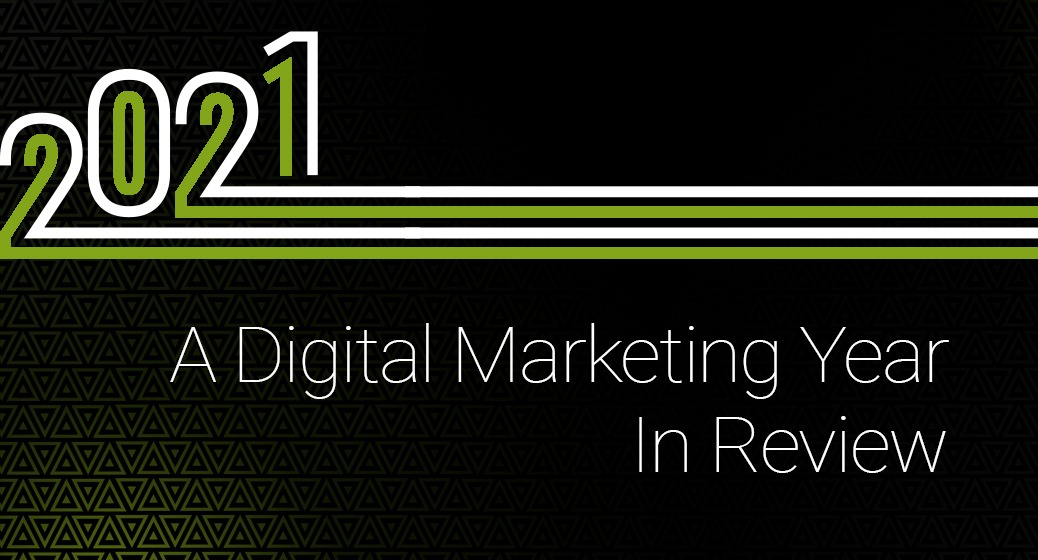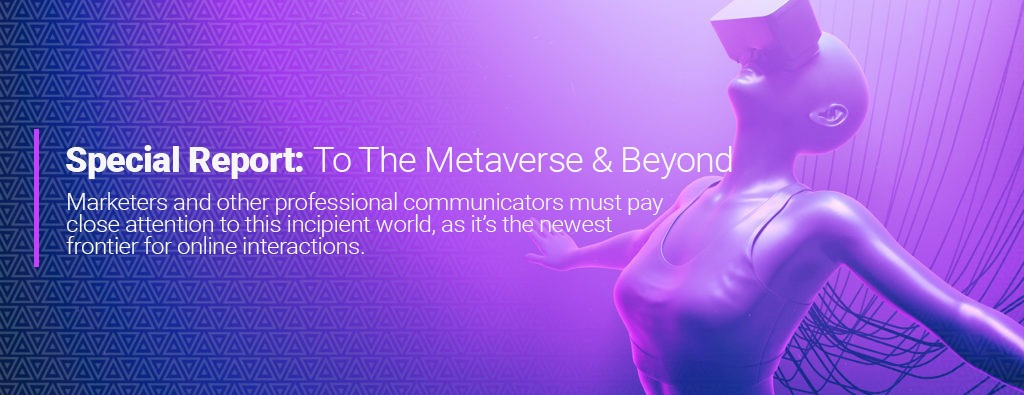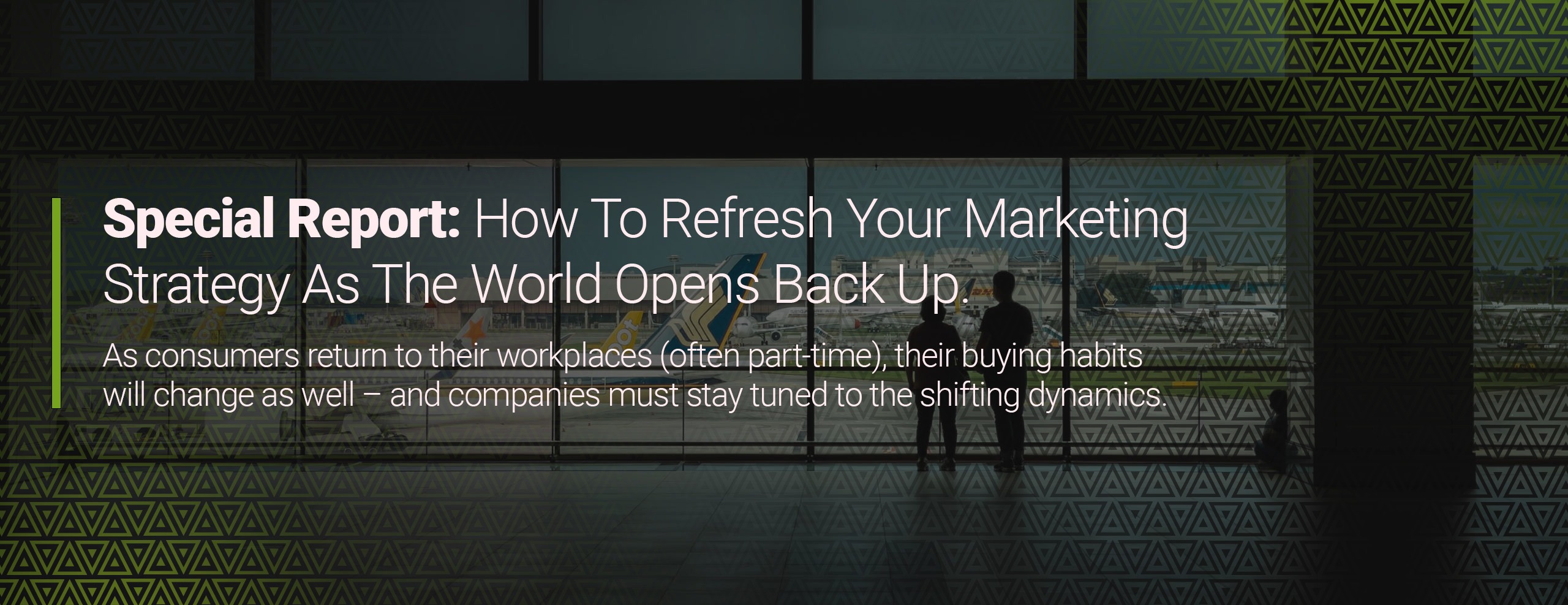After the omg-what-now scrambles of a locked-down 2020, marketers found a firmer footing in the gotta-go-digital world of 2021. Unsurprisingly, e-commerce thrived while many street-front stores barely survived. Digital buyers currently top 2.2 billion – well over a quarter of the global population of 7.7 billion people – with this uptrend likely to flourish through to the end of the decade.
A Year of Digital Disruptions
As personal priorities were reshaped by the pandemic, talent became more mobile than ever in 2021, while workers became increasingly aware of the advantages of remote and hybrid jobs. Spurred by the same spirit of innovation, customer-focused start-ups drove a groundswell in competition, using cutting-edge technology to grab attention and build loyalty.
Outpacing these innovators through traditional approaches is unlikely. This means companies must rank unforgettable user and customer experiences as top priorities. Although never completely set in stone, UX and CX often received only sporadic attention in the past, with annual overhauls.
However, in today’s dynamic market, setting and forgetting UX and CX is no longer an option. Modern businesses establish short, medium, and long-term goals, measure progress through monthly metrics (or even more frequently), and adjust course as required, responding rapidly to feedback.
What Changed in 2021
Despite the global deer-in-the-headlights freeze during the second quarter of 2020, shuttered businesses soon began groping for post-pandemic survival techniques. Much of the necessary technology was already on the market and quickly went mainstream, once it became increasingly clear that lockdown was a long-haul situation with no quick fixes.
- Digital Took the Lead: After treading on trad-ad heels for years, digital advertising finally moved into the lead, spurred by social and mobile technologies. Although 2021 figures are not yet available, there is no doubt that 2020 trends will continue, when digital ads topped 59% of all global ad spending. In percentage terms, digital media rose by 8% to USD 336 billion, while its traditional counterpart fell 18%, dropping to USD 233 billion.
- Virtual Events Ruled: Even in a vaccine-soothed 2021, the return of product launches and other corporate events remained largely online, forcing marketing professionals to pivot their entire focus overnight. That’s why agility and datasilo-jumping rank higher than ever before, as prime attributes, demanded of marketing and communications professionals.
- XR/VR/AR: Enhancing brand communications through innovative customer experiences, extended reality (XR) technologies are stirring up excitement in the marketing world, particularly for product launches and similar events where in-person attendance is not yet feasible.
- AI Is Here to Stay: Found only in science fiction until very recently, artificial intelligence is progressing in leaps and bounds through artificial intelligence and machine learning, imitating the way that human beings accumulate knowledge. An important element in data science, deep learning uses statistics for predictive modeling.
- Voice Search Intuitive and effortless, voice searches altered digital communications by cutting down on screen time, with no need for keyboarding. For brands, this means tweaking their SEO and focusing on answers to questions, usually through packing content with longtail keywords.
- Data Silo Breakouts: Digitally-driven Integrated Business Planning bought marketing and communications departments into closer contact with other areas, from operations and finance to procurement and production. By pooling data from many different sources, opportunities can be seized as they arise, resulting in real-time solutions that pump up the bottom line.
- Rise of the Crib Economy: Lockdowns bought home entertainment and locally-sourced home deliveries into the mainstream, particularly as lower living costs attracted remote workers to smaller towns with slower-paced lifestyles. However, this situation might not continue at this level through into 2022 and beyond, depending on corporate back-to-the-office demands and the after-effects of the Great Resignation.
- Integrity Is Vital: With reviews providing very public feedback on goods and services, better-informed consumers are demanding more than just good quality goods and services. They also require brands to be ethical and authentic, stating their positions on matters such as equal pay, fair trade, discrimination, and working conditions. Smart marketers are highlighting social accountability performances as strong selling points for socially-aware consumers.
A shift in Customer Focus
For marketers, the top three key performance indicators (KPIs) have remained unchanged for decades:
- Customer Retention: building customer loyalty is cheaper than hunting for new buyers;
- Lead Generation: customer churn is inevitable and must be offset through conversion strategies; and
- Customer Lifetime Value: underpins product-market matches, brand loyalty, and recurring revenues.
However, as consumer relationships shift from transactional to experiential, the experts are predicting a shuffle in this order, particularly for smaller businesses currently rating lead generation as the top priority. Instead, customer lifetime value will become the main KPI over the next few years, followed by customer retention.
What is Customer Lifetime Value?
As a rule of thumb, Customer Lifetime Value (CLV) should outweigh Customer Acquisition Cost (CAC) at least threefold. That means that for every dollar spent on marketing to draw in a new customer, the buyer should spend at least three dollars (and preferably more).
However, in an increasingly digital sales world, the composition of Customer Acquisition Costs is changing. Expensive street-front properties (and staff) are being replaced by low-cost distribution centers, while scattershot campaigns are making way for tightly targeted placements, tracking and encouraging consumers as they progress along the sales funnel.
As a logical outcome, marketing budgets will expand steadily, underpinned by lower CAC and more effective Customer Relationship Marketing (CRM), and underscoring the importance of the Customer Experience (CX) reflected in higher CLV.
Flywheel Not Funnel
This new emphasis on Customer Lifetime Value has highlighted a major flaw in the traditional sales-funnel model. Focused on closing a deal, it ignores the high but intangible values of customer loyalty and repeats purchases.

In contrast, flywheel marketing focuses on bringing happy customers back for more, through creative consumer marketing strategies. Underpinned by excellent customer service, this marketing approach builds up customer engagement through deploying personalized content, information-rich blogs, and customized contacts.
The end purpose is to turn buyers into brand advocates through word-of-mouth marketing, both digital and IRL. As a side note, marketers must reach out to HR and sales departments, ensuring that customer care teams receive the right kind of training to provide outstanding after-sale services.
New Approaches to CX and UX
In this enhanced experience economy, the combined impacts of limited mobility and exploding AI are reshaping links between brands and buyers. This transformative change is forcing businesses to rethink and restructure their sales strategies across the board, from customer-facing aspects like the website design to back-office routines like inventory maintenance.
But one core factor remains unchanged: data remains the backbone of every completed customer journey. Personalized profiles will continue to dominate the marketing landscape, with even more demographic details, drilling down as far as preferred purchasing times and payment methods.
Personalized CX Means Compelling Content
All this means that data can longer be disconnected, siloed in departments that don’t share with each other. For marketers to build up 360° views of their target markets, all this disparate data must be woven together into logical sequences.
Failure to do so has dire consequences. When potentially interesting offers arrive at the wrong times or through the wrong channels, they’re instantly trashed – and it’s a long hard path back from junk box to inbox. Dreaded by marketers, there’s a nightmare descriptor for messages that miss their mark: spam.
What Remained Unchanged in Covid Year 2
Despite sweeping changes in how people live, shop, and interact, many marketing aspects remained almost unaltered:
- Content is still king, building credibility and trust for organizations, particularly when rating the information needs of their audiences higher than their direct sales messages. While rallying teams around common goals, content marketing strategies – particularly in the B2B sector that show exactly what type of content should be developed.
- Video continues to play a major role in marketing efforts, with better user understanding of products and services. With over 80% of businesses already using videos, this is a surefire way of boosting sales, particularly as over 55% of consumers watch online videos every day.
- Social media remains one of the best ways of creating personal connections with audiences, endowing brands with a human touch. Worldwide, social media advertising is still outspending other channels, reaching out to over 4.2 billion social media users worldwide, with an average of almost nine social media accounts each.
- Influencers are still important, although major names carry equally major pricetags and may be viewed as too blatant by consumers. Many brands are now preferring to target niche audiences through lower-profile influencers, including local celebrities and podcasters. Micro-influencers – ordinary consumers who actually use and like the products – are tagged as a top trend for 2022, particularly as 70% of millennials purchase on the basis of peer recommendations.
- Chatbots are the friendly face of customer services, providing responses 24/7 that are both instant and accurate. For more complex issues, a hybrid chatroom system with well-trained agents on call as needed seems to provide effective solutions. With a projected annual growth rate of almost 25%, the global chatbot market is tipped to top USD 1. 25 billion by 2025.
Top SEO Trends for 2022
laying the groundwork for connecting brands to target audiences (particularly when they use search engines) SEO remains essential. Developing a solid organic presence online is still a major inbound marketing priority, with well-worded meta descriptions leading to robust SERPs.
Underpinning authentic customer engagement, organic rankings are still far cheaper than paid ads with shorter-term results. Each brand component affects its rankings, including trust, advertising, complete responses, and even reputation in general.
Mobile-first indexing means that Google indexes and ranks your page through its mobile version. In July, mobile page loading speed became a ranking factor, in parallel to the traditional desktop page loading time. This means that businesses must adjust to a multi-online search approach.
Woke Users Want Aware Businesses
Building up a compelling UX strategy demands wholehearted commitment, from C-suites to chatrooms. Lip service to good intentions (often reflected in elaborate PowerPoint presentations) is no longer enough.
Instead, businesses must plan how to reach out to their target buyers at many different levels. Exploring not only how, when and where users choose to engage with a company (or not), they must also know why. Are new pain points appearing? Are there gaps that need bridging, in an outdated sales funnel? Do prospective buyers slip out of the customer journey regularly at certain stages along the way?
Commitments to Diversity, Equity, and Inclusion (DE&I) are becoming just as important as product price and service quality; fair trade and decent working conditions can boost sales as surely as fast deliveries and generous returns policies. These intangible benefits must be highlighted by marketers, just as much as combo promos and seasonal specials.
The buyer journeys of the future will be steered by a range of carefully-calibrated touchpoints gleaned from aggregated personal data, engendering long-term customer loyalty. Meticulous analyses of the metrics generated by steady streams of trial-and-error content will undoubtedly be the best way of creating points of contact that deliver predictive promotions straight to their targets.
Predictions for 2022 – 2025
As market demands shift and technology evolves, marketing skills and tools must keep pace. Leaning heavily on emails, social media, and CRM, today’s generalist approach is about to be swamped by a surge of automation. This will be driven by AI, which is already sending warning ground shocks throughout the sales and marketing segments.
Morphing into cutting-edge technology hubs, marketing departments will still run on data (although gathered in different ways), with sophisticated analytics underpinned by machine learning. Neuromarketing will offer in-depth insights through micro-segmentation, with bespoke UX and CX buttressing customer loyalty, particularly through chatbots and the creative use of virtual reality.
The Upsides
One of the most exciting developments in the marketing world is Facebook’s shift in focus from social media network to a metaverse, reflected in its new name: Meta. The implications for business – and thus buyers and society as well – are far-ranging.
This innovative iteration of the Internet is already opening up a host of exciting opportunities by overstepping branding frontiers, with marketing and communications professionals challenged to find more creative solutions.
The future of retail seems to run through virtual reality (VR), with digitally-generated scenes that are amazingly lifelike. In parallel, augmented reality brightens up the real world with sensory enhancements that invite interactive participation. Valued at USD 12 million in 2020, this market is tipped to top US 73 million by 2024.
New e-commerce platforms are springing up, like Google Shopping and Facebook’s new conversational ads designed for small businesses. Even TikTok has introduced an in-app shopping feature, and LinkedIn expanded its LinkedIn Marketing Solutions (LMS) suite.
The Downsides
Just as marketers were breathing easier after months of pandemic-induced turmoil, two industry giants dropped bombshells that rocked the digital marketing world. These steps were prompted largely by rising global concerns over data privacy, reflected in legislation.

See how Transmyt can drive massive amounts of growth for your business.
-
SEO – Unlock massive amounts of traffic.
-
Content Marketing – Our team creates engaging content that will get shared + attract customers.
-
Paid Media – Effective paid strategies with clear ROI.
-
Website Development – Cutting-edge technology platforms.
Data Privacy Laws Worldwide
After two decades of almost complete freedom from constraints, marketers are facing severe constraints imposed to protect consumer privacy, through personal data protection legislation. Over the past few years, tough laws have been enacted in Europe (General Data Protection Regulations – GDPR), with similar legislation already in place in sixteen other countries.
Having lagged behind, the USA is now starting to catch up. In addition to California, Colorado, and Virginia, six other states have data privacy bills in the pipeline: Massachusetts, Minnesota, New York, North Carolina, Ohio, and Pennsylvania.
Apple Blindsides Email Marketers
Keeping in step with this trend, Apple released its iOS 15 update in September, with a trio of opt-in constraints for desktop and mobile operating systems:
- The Hide My Email feature lets consumers control who contacts them by using random and easily-deletable email addresses that forward messages to their personal inboxes.
- iCloud subscribers can use the Private Relay feature to hide IP addresses;
- Users can eliminate tracking pixels that tell email marketers whether an email has been opened;
The consequences may be dire for companies monetizing audiences directly through emails, as fees are often based on message open rates, particularly as an unusually high 50% of email messages are opened on Apple devices. Together, iOS 15 privacy options (which include Siri) have been adopted by over 90% of Apple users, eager to block tracking and targeting apps.
Google Tosses Third-Party Cookies
In March 2021, Google confirmed the elimination of third-party cookies from its huge browser and ad networks. With an implementation date but still uncertain, this will have immeasurable impacts on the entire digital marketing universe. So far, there is no sign that Chrome is working on an alternative cookie-like tool that would allow advertisers to reach out to their audiences while complying with tough new consumer privacy laws.
What Lies Ahead?
Despite the occasional backslips, the world is steadily moving towards its post-pandemic configuration, with the marketing world keeping pace. Here are a few predictions of what may lie ahead in 2022 and beyond:
- Higher spending on analytics will spotlight the importance of market segmentation and consumer insights;
- Martech automation will cut down on routine tasks, leaving more time available to focus on metrics and ROI;
- Data security will be paramount, ensuring consumers feel constantly protected against hacker attacks;
- Personalization will build stronger links between brands and consumers, with tighter-focused approaches.
Retail + Etail Hybrid
For the retail sector, a hybrid approach that blends bricks with clicks seems to offer the widest choice to increasingly picky consumers. This kind of structure requires a careful selection of platforms and apps that can automate both sides of the business.
B2B opts for ABM
Seamlessly aligned with the topsy-turvy world ushered in by the pandemic, strategic Account-Based Marketing (ABM) turns traditional marketing techniques upside down, ABM selects specific companies at the very start of the procurement process, based on quantifiable data and qualitative information. Then the sales and marketing departments draw up a list of dream customers, working together to close these deals.
Powering into the Future
As buyer behaviors adjust to shifts in society, businesses must recalibrate their sales strategies and marketing approaches. The consumers are out there, responsive and eager for interaction. That’s why smart marketers are seeking new ways of reaching out to current and potential customers that engage their interest while building loyalty for the turbulent years that undoubtedly lie ahead.
Want more insights?
Subscribe to our weekly marketing tips and advice, delivered straight to your inbox.
Oops! We could not locate your form.
Keep Reading
Want more? Here are some other blog posts you might be interested in.
Confusing a launch plan with a GTM strategy is one of the fastest ways to stall growth. A launch plan gets ...
On Monday, October 20, 2025, Amazon Web Services experienced a major incident centered in its US-EAST-1 region. The problem began in ...
There is a certain kind of account that arrives wrapped in urgency and praise. They hire you because you are the ...
For founders and growing companies
Get all the tips, stories and resources you didn’t know you needed – straight to your email!





